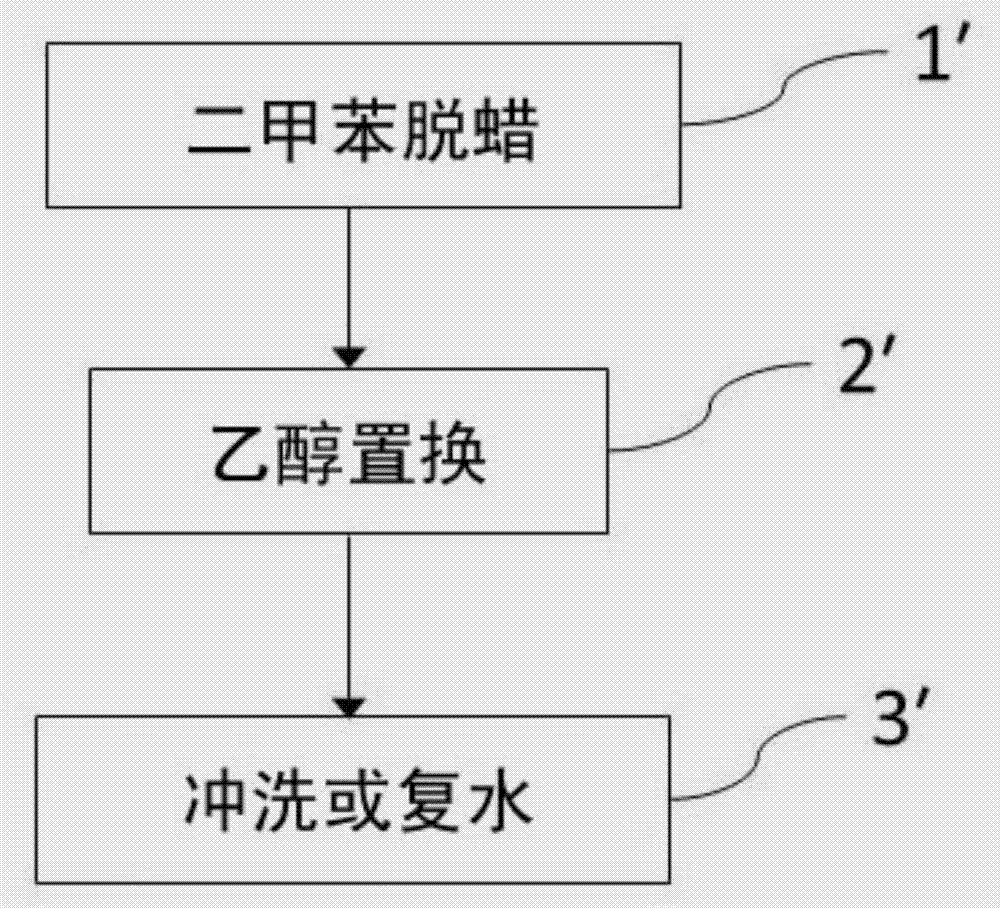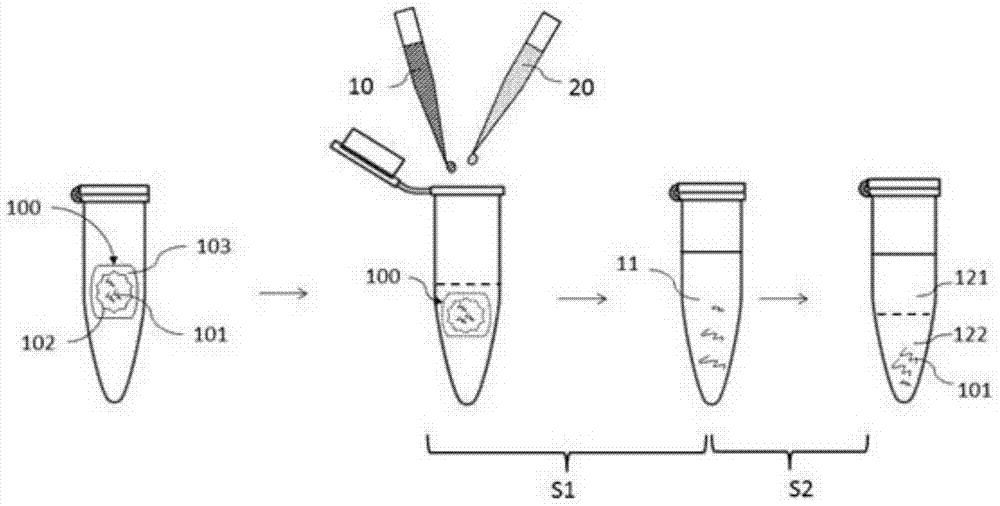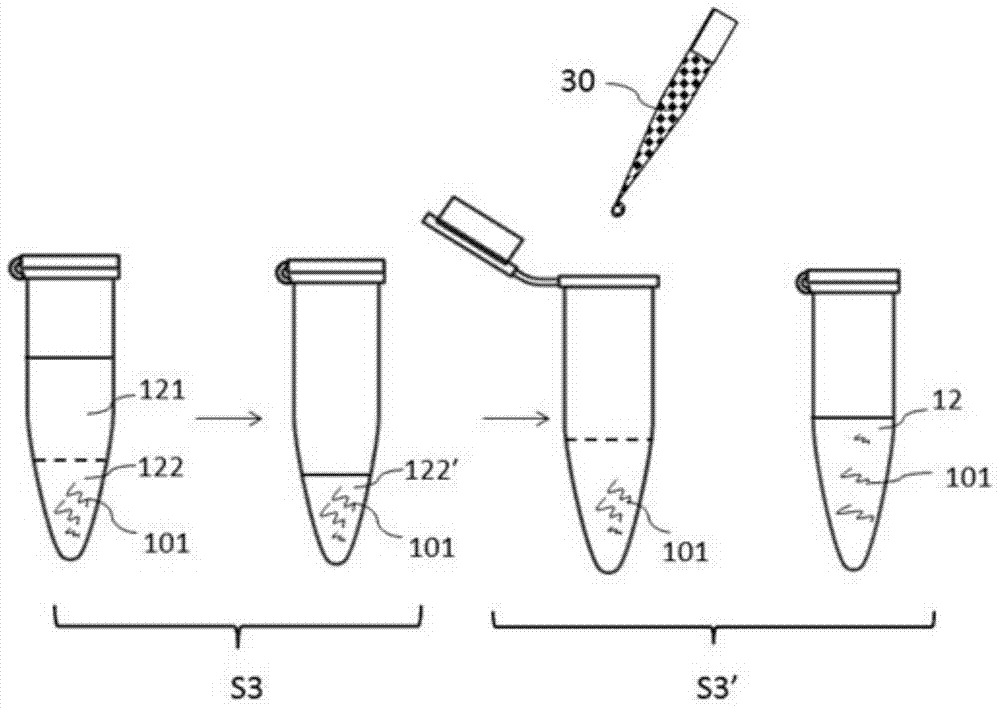Method for isolating nucleic acids from formalin-fixed paraffin embedded tissue samples
A paraffin-embedded, formalin technology, applied in biochemical equipment and methods, microbial determination/inspection, DNA preparation, etc., can solve problems such as accelerated equipment wear, unfavorable automation, and interference operations.
- Summary
- Abstract
- Description
- Claims
- Application Information
AI Technical Summary
Problems solved by technology
Method used
Image
Examples
preparation example Construction
[0039] According to the aforementioned FFPE tissue sample preparation principle, if you want to analyze the biological tissue in the FFPE tissue sample, you must first overcome the obstacles of paraffin materials. To solve this problem, the dewaxing method used in the past (please also refer to figure 1 ) Mainly use organic solvents, such as toluene, xylene, etc., to dissolve the paraffin material, and after multiple replacements of the organic solvent, the paraffin can be fully removed; then a series of "oil phase solution "Mixed and replaced with the aqueous solution" complex steps, the use of alcohol solvents (such as ethanol or isopropanol) to wash away the aforementioned organic solvents is called "rinsing"; or further replaced with aqueous solvents, called "rehydration" (Rehydration) step, can obtain the biological tissue for nucleic acid separation and extraction, and the biological tissue may be lost in the complicated operation, which significantly affects the recovery ...
Embodiment 2
[0073] Pretreatment method for dissolving paraffin wax with xylene (pretreatment 1)
[0074] This embodiment lists a preferred embodiment of the present invention. The large, medium, and small FFPE tissue samples are respectively pre-processed, and the paraffin material in the FFPE tissue sample is simultaneously dissolved and the biological tissue sample is lysed. The column separation method" separates and obtains nucleic acid products. The implementation steps are as follows:
[0075] First, add 400μl of xylene (oil phase solution), 180μl of water phase solution (1% SDS; 30mM Tris-Hcl; 10mM EDTA) and 20μl of proteolytic enzyme K (proteinase K) into a microcentrifuge tube containing FFPE tissue samples , Shake and mix for 10 seconds to obtain a mixed solution 2A. After that, the heating step is performed, which is to heat the aforementioned mixture 2A at 56°C for 1 hour, and then let it stand at room temperature. At the same time, the heater can be heated to 90°C. After the hea...
Embodiment 3
[0079] Pretreatment method for dissolving paraffin with 6-bromohexyl acetate (pretreatment 2)
[0080] This embodiment lists a preferred embodiment of the present invention. The large, medium, and small FFPE tissue samples are respectively pre-processed, and the paraffin material in the FFPE tissue sample is simultaneously dissolved and the biological tissue sample is lysed. The column separation method" separates and obtains nucleic acid products. The implementation steps are substantially the same as those in Example 2, and the difference is only that the oil phase solution used in Example 3 is 6-bromohexyl acetate, so the implementation details will not be repeated.
PUM
 Login to View More
Login to View More Abstract
Description
Claims
Application Information
 Login to View More
Login to View More - R&D
- Intellectual Property
- Life Sciences
- Materials
- Tech Scout
- Unparalleled Data Quality
- Higher Quality Content
- 60% Fewer Hallucinations
Browse by: Latest US Patents, China's latest patents, Technical Efficacy Thesaurus, Application Domain, Technology Topic, Popular Technical Reports.
© 2025 PatSnap. All rights reserved.Legal|Privacy policy|Modern Slavery Act Transparency Statement|Sitemap|About US| Contact US: help@patsnap.com



